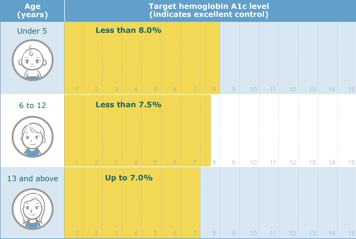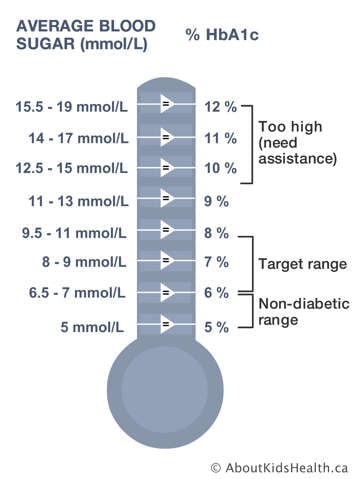An A1c test measures the average glucose level over the previous three months. This section will tell you what a good A1c reading is.
Target A1c levels
People without diabetes have an A1c between 4% to 6%. Even with intensive treatment, only a few children and teens with diabetes can reach this level without the risk of having frequent low blood sugar (hypoglycemia). Instead, the goal should be to try to achieve an A1c level based on their age.
A child with diabetes who has few low blood sugar episodes should reach the following target A1c levels according to the Canadian Diabetes Association Clinical Practice Guidelines (2013):


Keeping track of A1c results
Your child should have their A1c measured every three months. Results should be recorded to keep track of your child’s overall progress. Be especially sure to take note of results if you get your test done at a different laboratory than normal. Different labs can use different methods, which may lead to slightly different results.
Children and teens using insulin pumps may be able to aim for lower blood glucose targets and achieve lower A1c levels. This is because insulin pumps allow more and finer changes in insulin requirements.
Speak with your diabetes team about the best possible targets for your child.